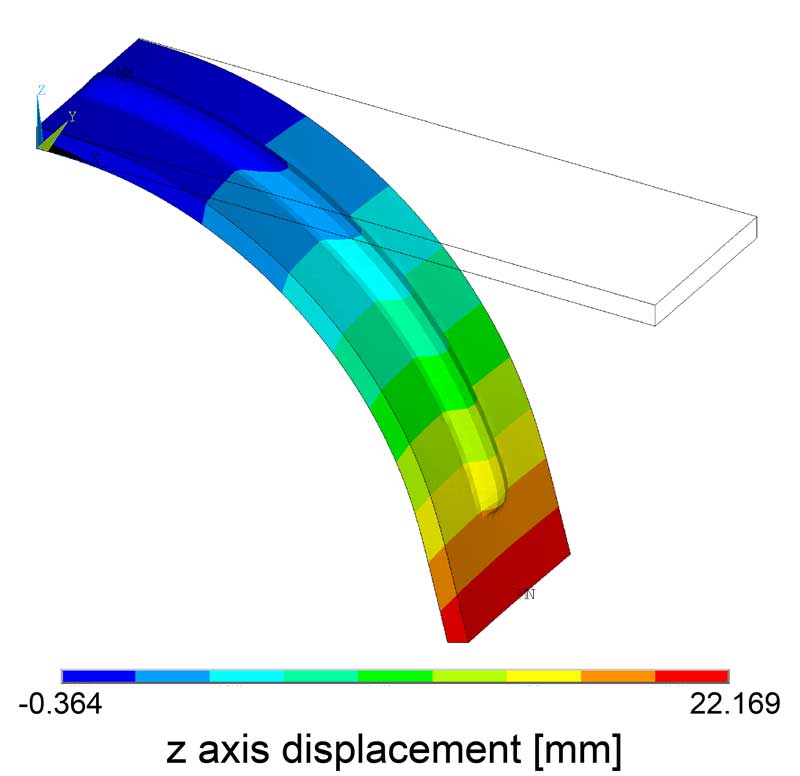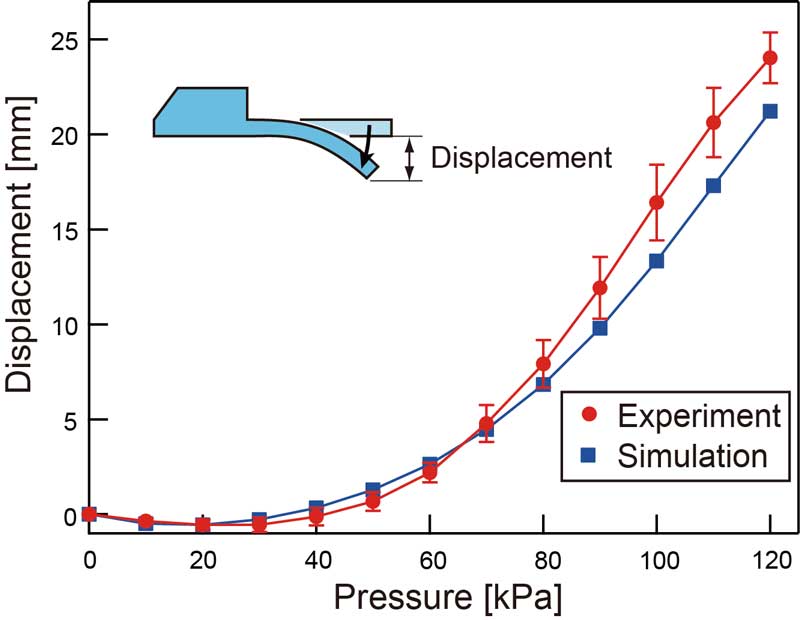Abstract
Our group proposes a new soft actuation system named "microhydraulics", which uses hydraulic pressure produced by integrated pressure generators to drive the actuator. The microhydraulic actuator with a sheet-like body is deformed by regulating the inner pressure of microchannels using the embedded pressure generators. The actuation mechanism is complicated because the actuator made of silicone elastomer (polydimethylsiloxane, PDMS) has a unique characteristic in deformation. We are trying to analyze the motion of microhydraulic actuators using a computer simulation technique with the aim of understanding the mechanism of microhydraulics and taking its advantage to design and develop more functional actuators.
 A result of structural analysis simulation of the microhydraulic actuator
A result of structural analysis simulation of the microhydraulic actuator
We use a commercial structural analysis software ANSYS to simulate the deformation of microhydraulic actuators. First, we analyzed a basic motion with a simple structure. Since the actuator made of PDMS exhibits superelastic properties in deformation, a superelastic model is employed in the simulation. In addition, we input the parameters about the stress-strain relationship of PDMS which were measured by biaxial tensile tests in order to make the analysis more realistic. As a result, we could successfully simulate the microhydraulic actuation, which was very similar qualitatively and quantitatively to the result of the demonstration experiments.
 The relationship between the applied pressure and the tip displacement
The relationship between the applied pressure and the tip displacement
Collaboration
- Oshima Lab, IIS, University of Tokyo
- Sumitomo Rubber Industries, Ltd.
Sponsor
- The Foundation for the Promotion of Industrial Science
- JSPS, KAKENHI
- Sumitomo Rubber Industries, Ltd.